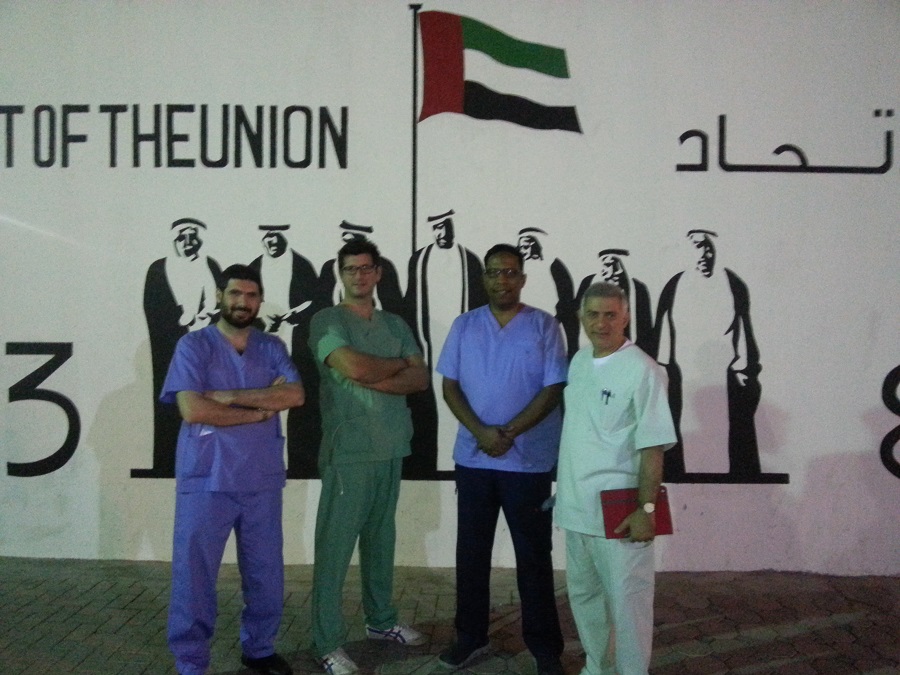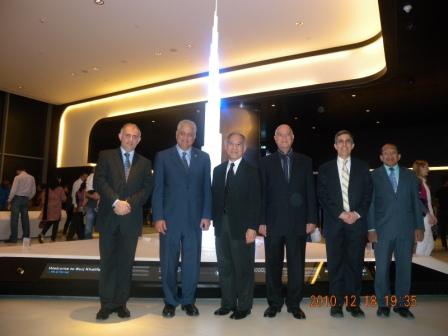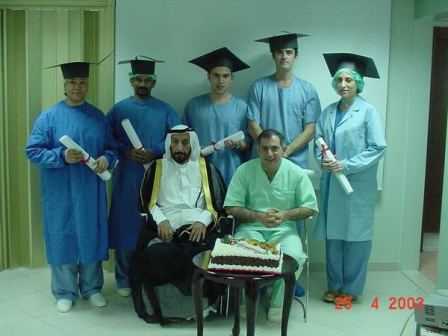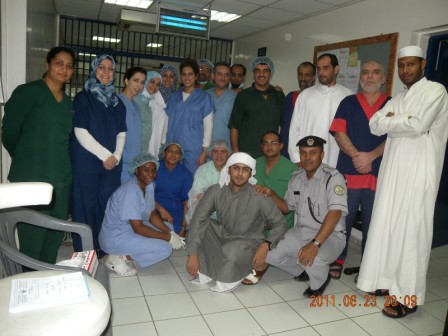COURSE GOALS:
To develop the necessary skills for the dental practitioner in utilization of dental implants to restore the functional and esthetic requirements of their patients. These skills include evaluation, diagnosis, treatment planning, treatment sequencing, surgical placement and restoration of the implant.
COURSE OBJECTIVES:
At the completion of the program, the practitioner should be competent to:
1) Examine the patient and determine the implant needs of the patient both functionally and esthetically.
2) Treatment plan and treatment sequence the proposed surgical and restorative phases of implant treatment.
3) Utilize the diagnostic wax up and denture tooth wax try-in for treatment planning and treatment sequences.
4) Establish the need for grafting procedures in the implant rehabilitation procedures.
5) Utilize all available diagnostic procedures including examination, articulated study casts, radio graphs in patient evaluations.
6) Surgically place from one to six implants in both the mandible and maxilla.
7) Utilize particulate and block grafting techniques to augment the implant surgical sites.
8) Stage augmentation and surgical implant placement using one and two stage procedures.
9) Effectively use membranes and barriers in implant-related grafting procedures.
10) Utilize the osteostome (internal sinus lift) procedure to prepare the implant surgical site.
11) Restore the implant-retained and implant-supported over-dentures.
12) Restore the implant-supported single crown.
13) Restore the implant-supported fixed complete denture (hybrid) prosthesis.
14) Restore the 3-unit and multi-unit implant-supported fixed partial denture.
15) Diagnosis and manage the ailing or failing dental implant.
16) Manage prosthetic complications associated with implant-retained and supported restorations.
COURSE DESCRIPTION:
The ID-SC will contain 4 modules or levels which will be presented within a one-year period. Each module will be for a 3-day period. The modules will be ordered such as to allow the practitioner to proceed to mastery of complex treatment as proficiency improves. The modules are presented at Four month intervals to allow the practitioner to utilize the skills learned in the module before proceeding onward to the next module.
As noted previously the modules are organized by skill level. This arrangement allows the practitioner to master simpler procedures such as implant-supported overdentures before proceeding to more complex restorations where implant placement, functional considerations and esthetic demands are more complex. Site development using grafting procedures will be introduced as the participant develops further surgical skills and the ability to recognize of deficiencies in bone volume and location.
LEVEL- I
GOAL:
In this module, basic knowledge and skills will be developed. Preclinical exercises will be utilized to train the student and prepare them for clinical treatment. Clinical treatment will emphasize basic surgical skills in implant placement and will be restricted to maxillary premolars and mandibular overdenture treatment where the restorative, esthetic and functional requirements are simplified.
CLINICAL ACTIVITIES:
These will involve preclinical exercises and clinical procedures as part of patient care
a) Familiarity with dental implant systems.
b) Preclinical implant placement.
c) Diagnostic workup of patient (to be treated in Level II).
d) Fabrication of radiographic and surgical templates.
e) Surgical placement of implants for implant supported overdenture and a single maxillary premolars.
DIDACTIC ACTIVITIES:
Lectures and seminars on the following topics:
a) Osseointegration
b) Implant systems
c) Diagnosis and Treatment Planning
d) Surgical Template fabrication
e) Implant-supported overdentures
f) Surgical placement of implants
OUTCOME MEASURES:
Didactic: The student will be tested in a formal one-half hour interview at the end of the Level- I period. He/she will be expected to provide correct responses to 70% of the questions to successfully complete to module.
Clinical: Each student will participate in two implant surgeries. The supervising instructor will evaluate the student’s surgical skills with regard to judgment and technical competency.
LEVEL- II
GOAL:
In this module, the student will be expected to refine surgical skills and develop precision in implant placement. The location of implants for implant-supported crowns requires further precision so as to develop adequate anatomic form for the restoration. Diagnostic and treatment planning skills will be expanded. Students will be required to present a “worked up” case with a treatment plan supported by clinical findings, articulated study casts with a diagnostic waxup and radio graphics including CT scans if appropriate. In addition the student will participate in preclinical exercises in impressioning, provisionalization and particulate grafts.
CLINICAL ACTIVITIES:
The focus of this module will be clinical with further emphasis of diagnostic skills and clinical decision making. The student will be introduced to particulate grafting techniques and membrane placement.
a) Selection, reading and evaluation of diagnostic radiographics
b) Articulated casts and diagnostic waxups
c) Impressing and provisionalization as preclinical exercises
d) Use of particulate grafting techniques and membranes as preclinical exercises
e) Surgical placement of posterior single unite implants in the mandible using a two stage technique in case of grafting.
f) Restoration of the previously placed implants in the anterior mandible and maxillary premolars.
DIDACTIC ACTIVITIES:
Lectures and seminars on the following topics:
a) Radiographic evaluation
b) Implant-supported single tooth restorations
c) Particulate grafting procedures utilizing restorable membranes
d) Inferior alveolar nerve and related implementation principles
OUTCOME MEASURES:
Didactic: The student will be tested in a formal one-half hour interview at the end of the Level- II period. He/she will be expected to provide correct responses to 70% of the questions to successfully complete to module.
Clinical: Each student will participate in two implant surgeries. The supervising instructor will evaluate the student’s surgical skills with regard to judgment and technical competency.
LEVEL- III
GOAL:
In this module, the student will broaden their surgical skills with multi-unit implant placement. There will be a greater emphasis on prosthodontic restoration including indexing at the time of surgery. The concepts of golden proportion, bone splitting, spreading, immediate placement and load will be presented. The student will also develop skills at particulate grafting and membrane placement in the anterior maxilla. Finally, the student will be exposed to harvesting placement of block grafts at the preclinical level.
CLINICAL ACTIVITIES:
The focus of this module will also be clinical. The preclinical exercise will prepare the student for module IV where block grafts will be done clinically in conjunction with internal sinus lifts in the posterior maxillary area.
a) Two-three multi-unit and implant placements and restoration in the anterior and premolar regions in both the maxilla and mandible.
b) Single-stage and immediate load implant placement and restoration in the anterior and premolar region
c) Indexing at the time of implant placement
DIDACTIC ACTIVITIES:
Lectures and seminars on the following topics
a) Fixed prosthodontic restorations
b) Abutment selection and use of custom abutments
c) Surface enhancement of implants including PRP
d) Single stage and immediate loading techniques
e) Golden Proportion and esthetic principles
OUTCOME MEASURES:
Didactic: The student will be tested in a formal one-half hour interview at the end of the Level- III period. He/she will be expected to provide correct responses to 70% of the questions to successfully complete to module.
Clinical: Each student will participate in two implant surgeries. The supervising instructor will evaluate the student’s surgical skills with regard to judgment and technical competency.
LEVEL- IV
GOAL:
This module emphasizes the optimization of implant placement. The student is expected to demonstrate sophisticated skills as treatment planning, basic implant placement and restoration of single and multi-unit implant restoration (1-4 units). Optimization of implant placement involves particulate grafts, block grafts, membrane placement and the internal sinus lift. Restoratively the student will learn to utilize the hybrid-fixed complete denture for the edentulous maxilla or mandible.
CLINICAL ACTIVITIES:
a) Implant placement in the posterior maxilla
b) Utilization of the internal sinus lift for implant placement in the posterior maxilla
c) Utilization of block grafting techniques harvesting from the symphysis and ramus
d) Restoration of the edentulous arch with the implant-supported hybrid-fixed complete denture
DIDACTIC ACTIVITIES:
Lectures and seminars on the following topics
a) Internal Sinus lift technique
b) Bone grafting techniques
c) Advanced treatment planning
d) Occlusion
e) Management of the ailing implant
f) Prosthetic and biomechanical problems of implant-supported restorations
OUTCOME MEASURES:
Didactic: The student will be tested in a formal one-half hour interview at the end of the Level- IV period. He/she will be expected to provide correct responses to 70% of the questions to successfully complete to module.
Clinical: Each student will participate in two implant surgeries. The supervising instructor will evaluate the student’s surgical skills with regard to judgment and technical competency.








